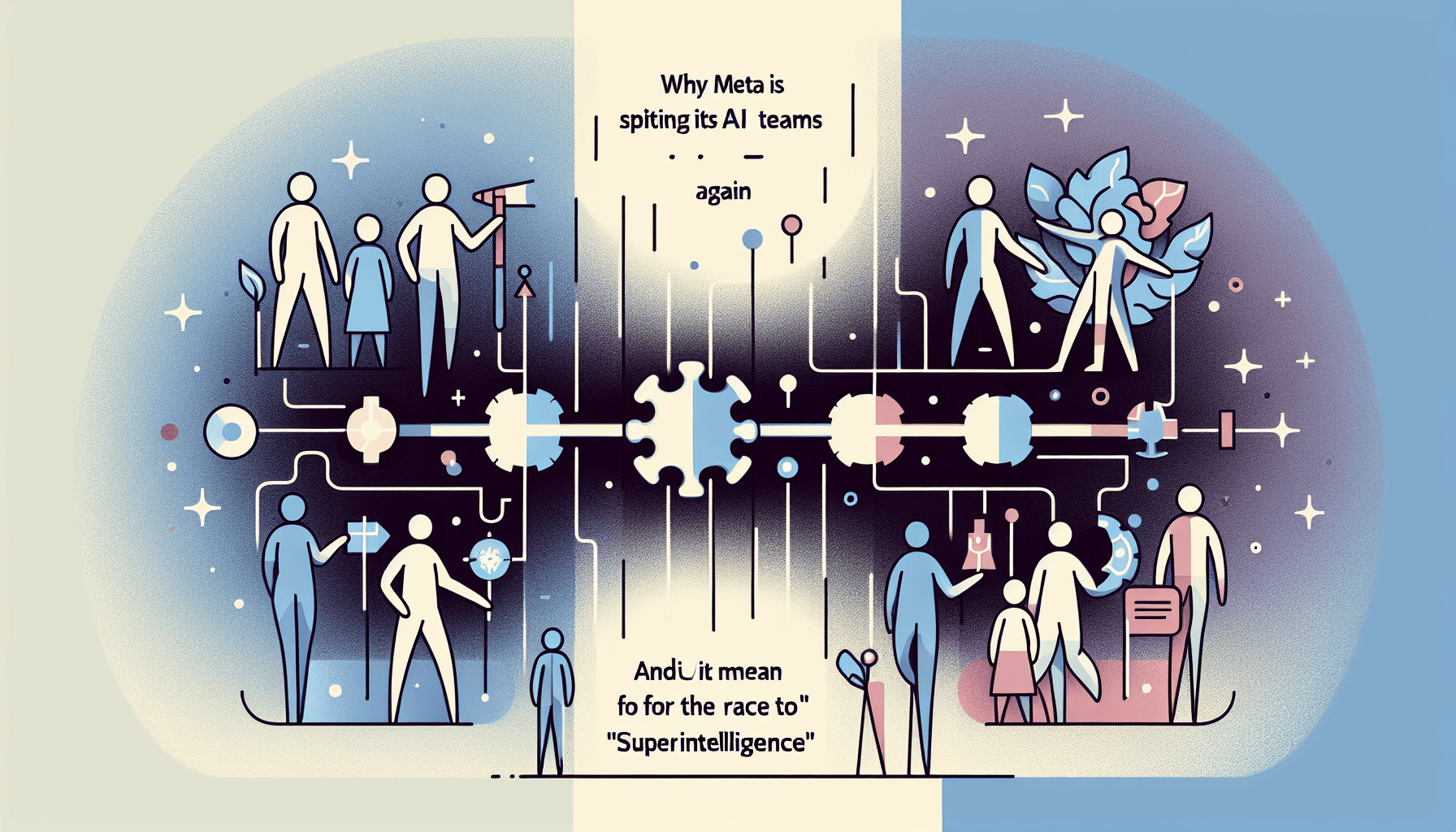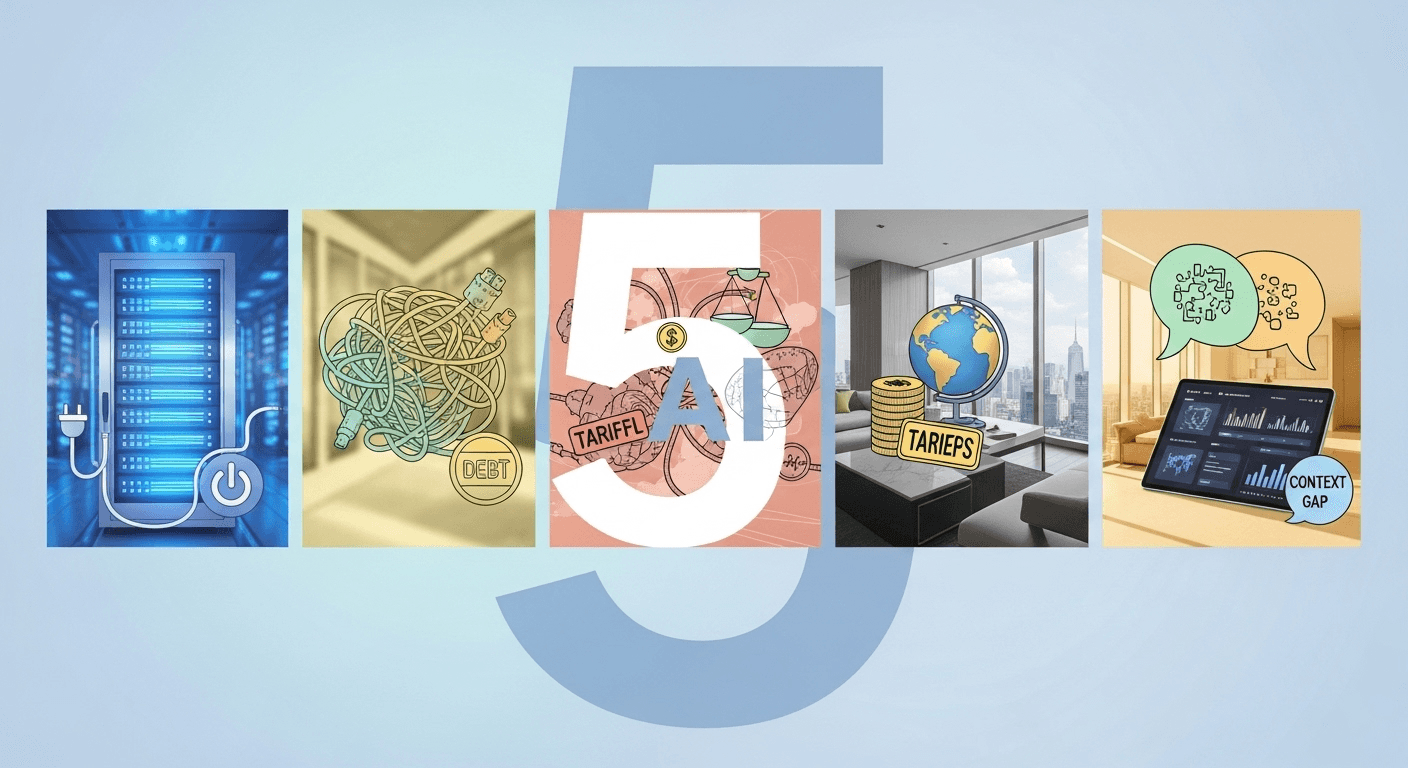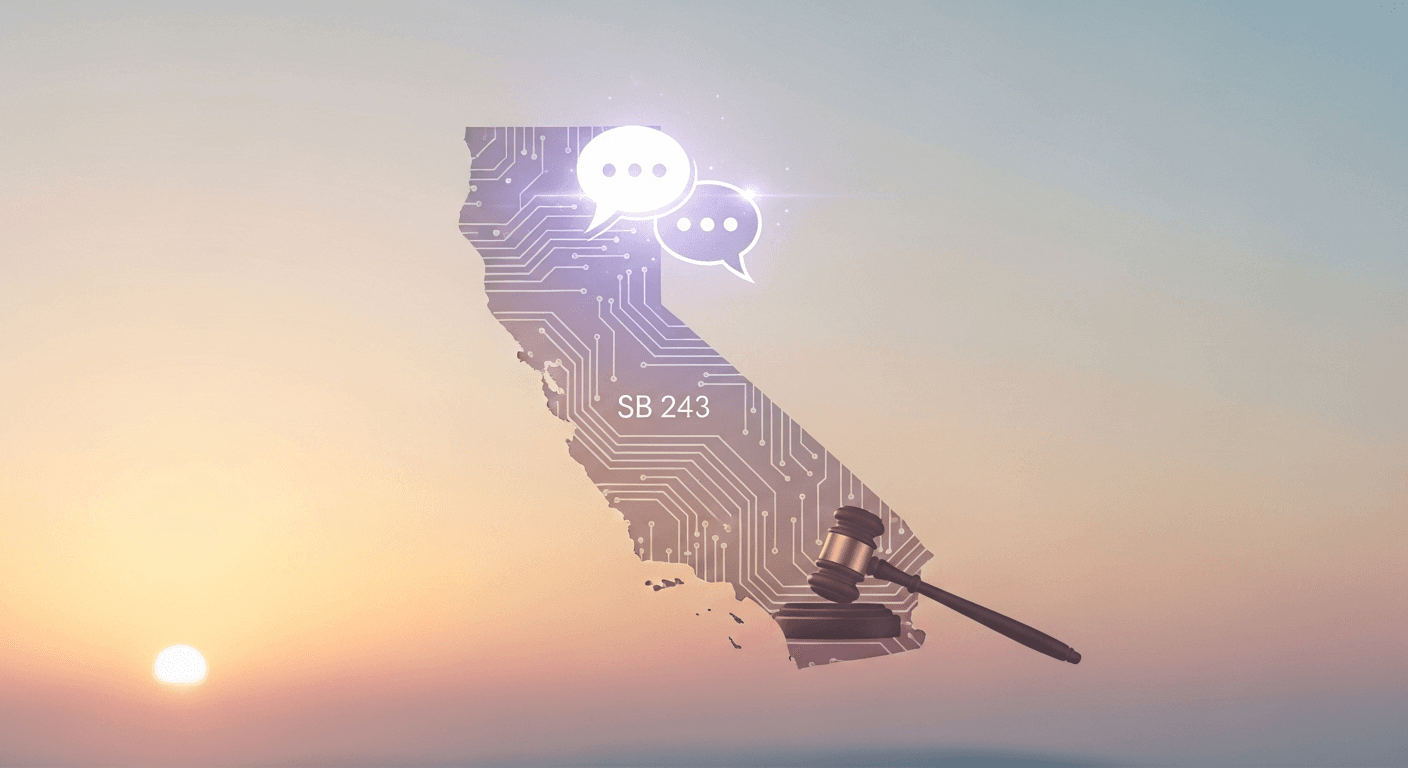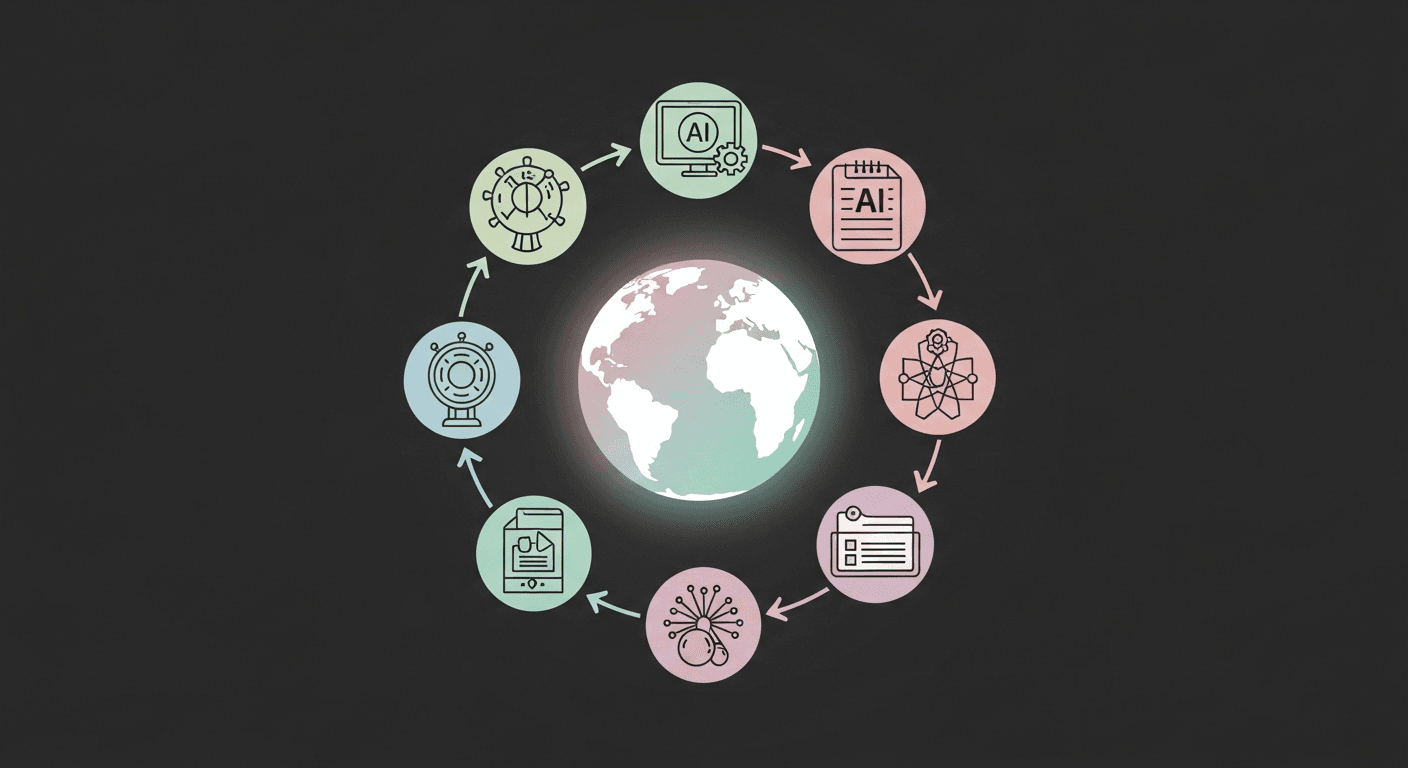Why Meta Is Splitting Its AI Teams (Again) — And What It Means for the Race to “Superintelligence”

Why Meta Is Splitting Its AI Teams (Again) — And What It Means for the Race to “Superintelligence”
Meta is reshaping its AI org structure once more. Here’s what’s changing, why it matters, and how entrepreneurs and professionals can get ahead.
The headline, in plain English
Meta is reportedly splitting its artificial intelligence efforts into distinct groups again, part of CEO Mark Zuckerberg’s ambition to push toward more capable AI systems — the kind he has described as “general intelligence” and that many observers loosely call “superintelligence.” While the precise reporting lines evolve, the core idea is familiar: keep a deep research arm focused on long-horizon breakthroughs, and a product arm focused on shipping AI features to billions of users.
This latest move follows years of oscillation between centralized research and productized AI at Meta — from the original FAIR research lab, to an Applied ML group, to a Generative AI product org, and recent efforts to push research closer to product teams. The goal now is speed: accelerate the path from cutting-edge research to consumer-and-enterprise features across Facebook, Instagram, WhatsApp, and devices like Ray-Ban Meta smart glasses.
Quick background: Meta’s AI journey in three acts
- FAIR era (2013–2020): Meta’s FAIR lab (Facebook AI Research) prioritized long-term science under leaders including Yann LeCun. This work seeded breakthroughs in computer vision, language, and recommendation systems used across Meta.
- Applied/product AI (2018–2022): An Applied ML group scaled models into products: ranking and recommendations, integrity, ads, and creator tools.
- Generative AI & open models (2023–2024): Meta formed a Generative AI org and released the Llama family of models (most recently Llama 3) under a community license, while upgrading the Meta AI assistant across apps and devices.
In early 2024, Zuckerberg said Meta is building “general intelligence” and intends to open-source much of its work, backed by massive compute investments — on the order of hundreds of thousands of Nvidia H100-class GPUs by the end of 2024.
What’s actually changing now
Reports indicate Meta is once again creating clearer boundaries between:
- Long-horizon research: Teams working on fundamental advances in reasoning, multimodality, efficiency, safety, and the science required for more general AI systems.
- Product & platform AI: Teams focused on shipping and scaling AI experiences in Meta’s apps and hardware — assistants, creation tools, ads, business messaging, and developer platforms.
The rationale: reduce bottlenecks, speed up decision-making, and let each group optimize for its mission — scientific progress on one side, user and customer impact on the other.
“We’re building general intelligence, open-sourcing it responsibly, and bringing it to billions of people,” Zuckerberg said in early 2024, framing the company’s north star and heavy compute spend. [Reuters]
Why this split, and why now?
1) The AGI/superintelligence race is about pace and focus
Meta is competing with OpenAI, Google, Anthropic, Apple, and startups on both scientific capability and speed to market. Separate tracks help avoid the common trap where research is slowed by product delivery schedules — or product roadmaps are held hostage by exploratory research.
2) Compute and data scale are finally in place
Meta has amassed one of the world’s largest AI compute fleets and data pipelines. Zuckerberg publicly discussed plans for 350,000+ H100 GPUs (or ~600,000 H100-equivalents) to power training runs for next-gen models. That unlocks both ambitious research and rapid product iteration.
3) Open, ecosystem-first positioning
By releasing strong base models under a permissive community license and shipping ubiquitous assistants, Meta can seed an ecosystem of apps, startups, and enterprise deployments around its stack — potentially growing influence faster than closed-only rivals. Llama 3 was a step-change in that strategy. [Meta AI]
What this means for users, creators, and businesses
- Better assistants, everywhere: Expect faster, more capable Meta AI in Facebook, Instagram, WhatsApp, and on Ray-Ban smart glasses, with more reliable answers, image and video generation, and task completion.
- Creator and ads tools that actually convert: Generative creative for ads, auto-variation testing, brand-safe guardrails, and content co-pilots should mature quickly as product teams get tighter feedback loops with research.
- Enterprise-friendly models and guardrails: Openly available Llama models plus safety and evaluation tooling (for example, Llama Guard and structured evals) lower the barrier to building compliant AI workflows in marketing, support, and knowledge management.
- Platform opportunities for startups: More APIs, better on-device capabilities, and multi-modal foundations create space for vertical copilots, agentic workflows, and privacy-first deployments.
How entrepreneurs and product leaders can act now
- Build on open models first: Prototype with Llama 3 for text and vision tasks to validate UX and economics. If you need closed models later, you can swap with minimal refactoring.
- Use retrieval, not just bigger models: Pair models with your domain data via retrieval-augmented generation (RAG) and structured tools; gains in accuracy and cost often beat simply scaling parameters.
- Design for multi-turn, multi-modal: Expect assistants that reason across text, images, and video. Architect prompts, memory, and feedback loops to support real workflows, not one-shot demos.
- Budget for evals and safety: Treat evaluations, red-teaming, and policy checks as part of product. Meta and the broader community offer open eval sets and safety tools; use them early and often.
- Think distribution: If your audience lives in Instagram or WhatsApp, plan for native surfaces and shareable agents. Leverage Meta’s reach rather than fighting it.
The strategy logic: separating research from shipping
Splitting teams isn’t just corporate reshuffling. It’s a deliberate operating model for frontier tech:
- Different clocks: Research timelines are uncertain; product timelines are quarterly. Separate tracks protect both.
- Different incentives: Papers and benchmarks vs. retention, revenue, and user trust. Clear KPIs reduce culture clash.
- Fast transfer learning: A crisp interface between research and product enables quick handoffs of techniques, datasets, and safety findings.
Meta has tried variants of this model before. The difference now is scale — in compute, data, and user touchpoints — and a more explicit push toward general-purpose AI capabilities backed by public commitments to open releases. [The Verge]
Risks and open questions
- Coordination overhead: Splits can create duplication or “not-invented-here” friction between teams.
- Safety and governance: Faster shipping increases the need for robust evaluations, abuse prevention, and transparency. Open model releases demand responsible safeguards and clear licenses.
- Talent magnet wars: Retaining researchers and product builders when rivals are dangling eye-watering offers remains a challenge in 2025.
- Compute sustainability: Training bigger models is expensive and power-hungry. Expect more emphasis on efficiency research and inference optimization.
Bottom line
Meta’s latest AI reorg is not a retreat; it’s an escalation. By clarifying mandates between research and product, Meta is betting it can move faster toward more general AI while delivering practical value in the apps billions already use. For founders and operators, the takeaway is simple: build with open, design for multi-modal and agentic use cases, and align with distribution channels that already have scale.
FAQs
What does Meta mean by “general intelligence” or “superintelligence”?
Meta leadership often says “general intelligence” to describe broadly capable AI systems that can reason, plan, and act across tasks and modalities. Media sometimes uses “superintelligence” as a catch-all. Either way, expect steady capability jumps rather than a single “AGI day.”
Will Meta open-source its most powerful models?
Meta has committed to releasing strong base models (for example, Llama 3) under a community license, but retains restrictions to manage risk and brand use. Whether future top-tier models ship with similar terms will depend on safety evaluations and policy guidance. Learn more.
How will this affect Meta’s consumer apps?
Expect a steadily improving Meta AI assistant across Facebook, Instagram, and WhatsApp, plus better creation tools, smarter recommendations, and more business messaging automations. Meta details recent updates here.
What’s new for businesses and developers?
More capable models, clearer safety tooling, and broader distribution. Start with Llama-based prototypes, add RAG with your data, and plan to meet users where they are (Instagram, WhatsApp, or web).
Isn’t constant reorganization a red flag?
Reorgs can be distracting, but in fast-moving fields they’re often a sign of focus. The key is whether interfaces between research and product are crisp and whether shipping velocity improves quarter over quarter.
Sources
- Reuters: Meta is building general intelligence, aims to open-source (Jan 2024)
- The Verge: Zuckerberg says Meta is building general intelligence and will open-source it (Jan 2024)
- Meta AI Blog: Introducing Llama 3 (Apr 2024)
- Meta Newsroom: Meta AI with Llama 3 arrives across apps and Ray-Ban Meta (Apr 2024)
- CNBC: Zuckerberg says Meta is building general intelligence; details massive GPU spend (Jan 2024)
- Meta AI Research (FAIR): Research mission and publications
Thank You for Reading this Blog and See You Soon! 🙏 👋
Let's connect 🚀
Latest Blogs
Read My Latest Blogs about AI

5 AI Stories Shaping Business Today: Power, Data Debt, Tariffs, Penthouses, and the Context Gap
A clear roundup of 5 AI trends shaping business now: power-hungry data centers, data debt, AI for tariffs, luxury sales with AI, and the context gap — with takeaways.
Read more


